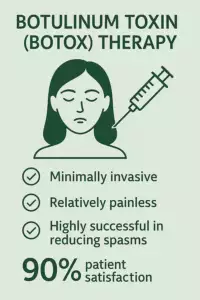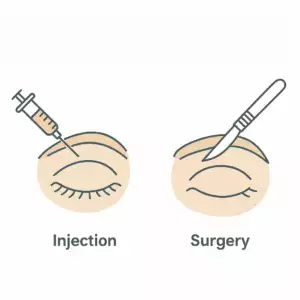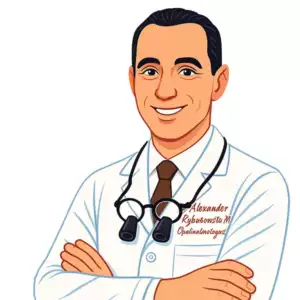Blepharospasm: Understanding, Coping, and Effective Treatment with Dr. Alexander Rabinovich
If you’re experiencing frequent, involuntary blinking, or your eyelids close unexpectedly, you might be dealing with a condition known as blepharospasm. While this condition can be alarming and uncomfortable, it’s important to remember that effective help is available.
Dr. Alexander Rabinovich, an esteemed ophthalmic plastic surgeon based in Brooklyn, New York, offers comprehensive and compassionate treatment for patients dealing with blepharospasm, helping them return to a comfortable, confident life.
What Exactly is Blepharospasm?
Blepharospasm is a neurological condition characterized by abnormal, involuntary blinking or spasms of the eyelids. It can range from mild discomfort to severe episodes that significantly impair vision and quality of life.
These involuntary contractions often:
- Affect both eyes simultaneously.
- Occur unpredictably.
- Cause frustration and anxiety.
- Lead to embarrassment in social situations.
- Frequent blinking or eyelid twitching
- Forceful eyelid closure
- Sensitivity to light
- Dry or irritated eyes
- Wearing sunglasses to reduce sensitivity to light
- Practicing stress-reduction techniques
- Regular eye breaks during screen time
- Botulinum toxin injections (Botox)
- Oral medications
- Surgical intervention in severe cases
Common Symptoms of Blepharospasm
- Frequent blinking
- Involuntary closure of the eyelids
- Difficulty opening eyes once spasms start
- Sensitivity to bright lights
- Dryness or irritation in the eyes
Why Does Blepharospasm Occur?
The precise cause of blepharospasm isn’t completely understood, but it’s believed to result from abnormal functioning in the part of the brain that controls muscle movement. Factors that can contribute to or exacerbate symptoms include:
- Stress
- Fatigue
- Bright lights
- Air pollution
- Caffeine
Living with Blepharospasm: Impact on Daily Life
Blepharospasm can significantly impact daily activities, making tasks such as driving, reading, watching TV, or even having a simple conversation extremely challenging. Emotional health can also suffer, as individuals may feel isolated or anxious due to the unpredictable nature of their symptoms.
Effective Treatments Offered by Dr. Alexander Rabinovich
Dr. Alexander Rabinovich, a renowned ophthalmic plastic surgeon in Brooklyn, New York, specializes in advanced treatments for blepharospasm. He approaches every patient with empathy, thoroughly understanding their unique challenges and designing personalized treatment plans to provide lasting relief.
Botulinum Toxin (Botox) Therapy
One of the most successful and common treatments provided by Dr. Rabinovich is Botulinum Toxin (commonly known as Botox) injections. Botox works by blocking the nerve signals that cause eyelid spasms, providing significant relief for up to several months at a time.
According to recent clinical studies, over 85% of patients report a significant improvement in their symptoms following Botox therapy, with satisfaction rates exceeding 90% among those who receive regular injections. These outcomes make Botox one of the most trusted and effective solutions for managing blepharospasm.
This treatment is:
- Minimally invasive
- Relatively painless
- Highly successful in reducing spasms

Surgical Options
In severe cases, or when Botox treatment is less effective, Dr. Rabinovich may suggest surgical options such as myectomy—a procedure that involves careful removal or modification of the muscles responsible for eyelid closure. This surgical intervention can offer profound and long-term relief, significantly improving the quality of life for patients who haven’t found adequate relief through other therapies.
Why Choose Dr. Alexander Rabinovich?
Choosing the right specialist can make all the difference in treating blepharospasm. Dr. Alexander Rabinovich stands out due to his extensive experience, patient-centric approach, and impressive track record of successful outcomes. Patients visiting his Brooklyn clinic receive compassionate care from a dedicated team committed to restoring their comfort and confidence.
Coping Strategies for Everyday Life
Dr. Rabinovich emphasizes the importance of lifestyle adjustments and coping strategies alongside medical treatments:
- Manage Stress: Techniques like meditation, yoga, and relaxation exercises can help reduce episodes.
- Wear Protective Eyewear: Sunglasses or special tinted glasses can mitigate sensitivity to bright lights.
- Regular Breaks: Take frequent breaks from screen use to reduce eye strain.
- Hydrate and Lubricate Eyes: Use lubricating eye drops regularly to prevent dryness.
Emotional stress or anxiety often worsens blepharospasm symptoms, highlighting the importance of managing mental health alongside physical treatment.
Despite the severity of symptoms, blepharospasm doesn't damage eyesight directly. However, episodes of involuntary eyelid closure can effectively cause temporary blindness, significantly affecting daily life.
You Are Not Alone, and Help is Available
If you’re dealing with blepharospasm, remember you are not alone. Many others have successfully managed this condition and regained control of their lives. With the expert guidance and treatment from Dr. Alexander Rabinovich, you too can experience significant improvement.
Schedule your consultation today and take your first step toward relief. With Dr. Rabinovich by your side, you’re in skilled hands, and your journey to wellness and comfort is just beginning.
Understanding Blepharospasm and Meige Syndrome
Blepharospasm is characterized by twitching around the eyes, while Meige syndrome extends these spasms to the lower face. Patients often feel their eyelids involuntarily closing shut, making it extremely difficult to open them without significant effort. Although their eyes remain normal, sufferers may experience temporary blindness during these episodes.
Effective Treatment with Botulinum Toxin
While the exact cause of blepharospasm and Meige syndrome remains unknown, treatment with Botulinum toxin injections (Botox, Xeomin) provides substantial relief. These injections induce localized, partial paralysis, significantly reducing muscle spasms.
Benefits of Botulinum toxin therapy include:
- No systemic side effects compared to oral medications.
- Injections administered roughly every three months.
- Rapid symptom relief, typically within days to a week.
Most patients find regular Botulinum toxin treatments highly effective, enabling them to resume a relatively normal life. However, a minority of individuals may experience diminished results over time or no initial response, requiring alternative treatments.
Alternative Treatments
In rare cases where injections fail, surgical options can be considered to effectively manage the symptoms and enhance the patient’s quality of life.


